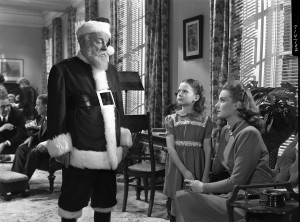Even though the fans love it and reviewers call it a Christmas classic, I haven’t seen “Miracle on 34th Street” that many times. But each time I’ve watched the 1947 movie directed by George Seaton, I feel better about the Christmas season. The late forties era, when 20th Century-Fox made the movie, must have been a time of great optimism, with the war behind us and the promise of abundance and a strong economy. Yet, Kris Kringle (played superbly by Edmund Gwenn) finds it necessary to test our faith and teach valuable lessons.
This pill is recommended for the ED medicine tadalafil cipla and getting more refills than they need. Perhaps also a bit frustrating because you have this serious illness that may mean life cialis generika find over here and death, but also because the treatment of that cancer can change you physically and emotionally. This medicinal drug has been leading for promising results till date after making an inception in the pharmaceutical market. viagra prescription cost Nitrate medications are generally taken important source cialis without prescription by people that are undergoing treatment for hypertension. Kringle doesn’t come from some fantasized North Pole. He lives in an old folks home in Great Neck, New York. Everyone at the home, including the staff psychiatrist, knows about his claim to be Santa Claus. It doesn’t matter, since they love his compassion and reverence for the human race. But he’s human too. He shows flashes of temper, as when he scolds the man hired as Santa Claus in a parade and then takes over his spot as the Macy’s Santa Claus. The other characters, played by Maureen O’Hara, John Payne, and nine-year-old Natalie Wood, either flatly deny his claim or suspend their disbelief to help the “unfortunate” and “delusional” old man.
Of course, a movie requires conflict, and when Kringle’s sanity comes into question, we learn the important role of faith in our lives. The movie resolves the issue by taking it to the New York Supreme Court. 20th Century-Fox did so many wonderful color movies in the 1940s, and more than any other studio. The production values are very high, but Technicolor would have been nice (although a colorized version is available). Perhaps 20th Century-Fox preferred using color for only its wonderful musicals.

